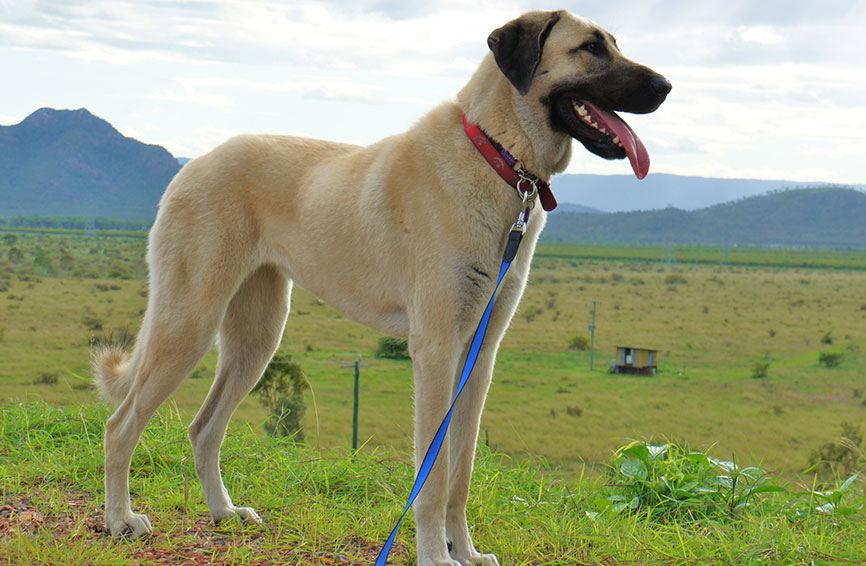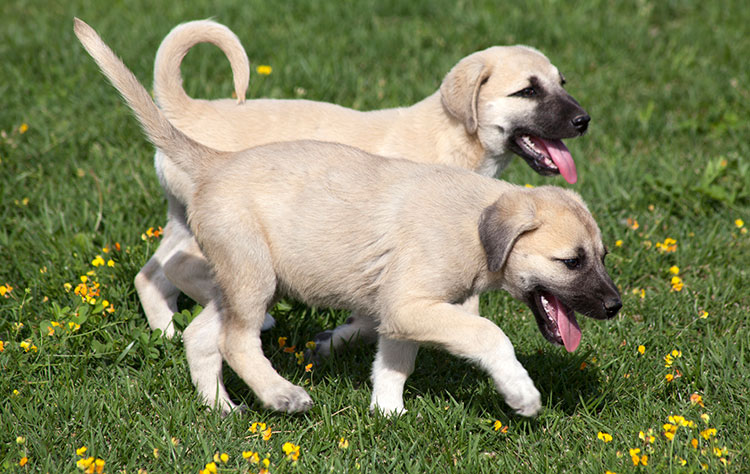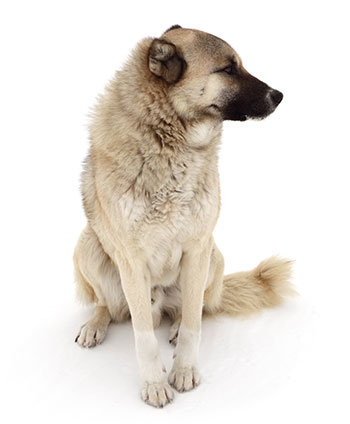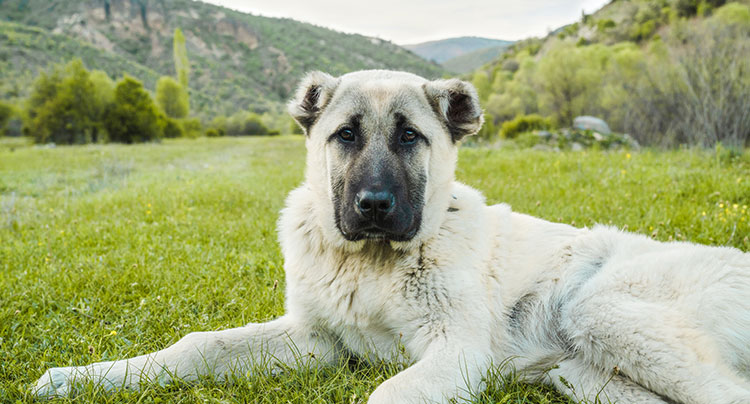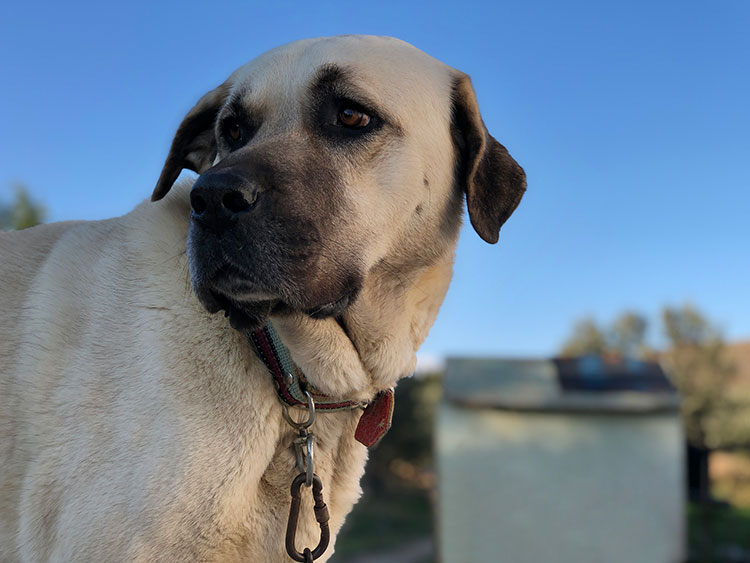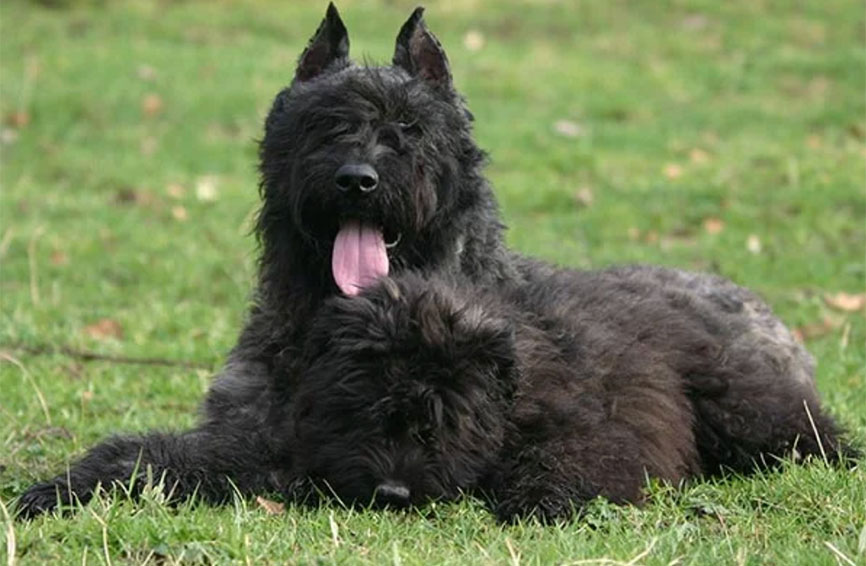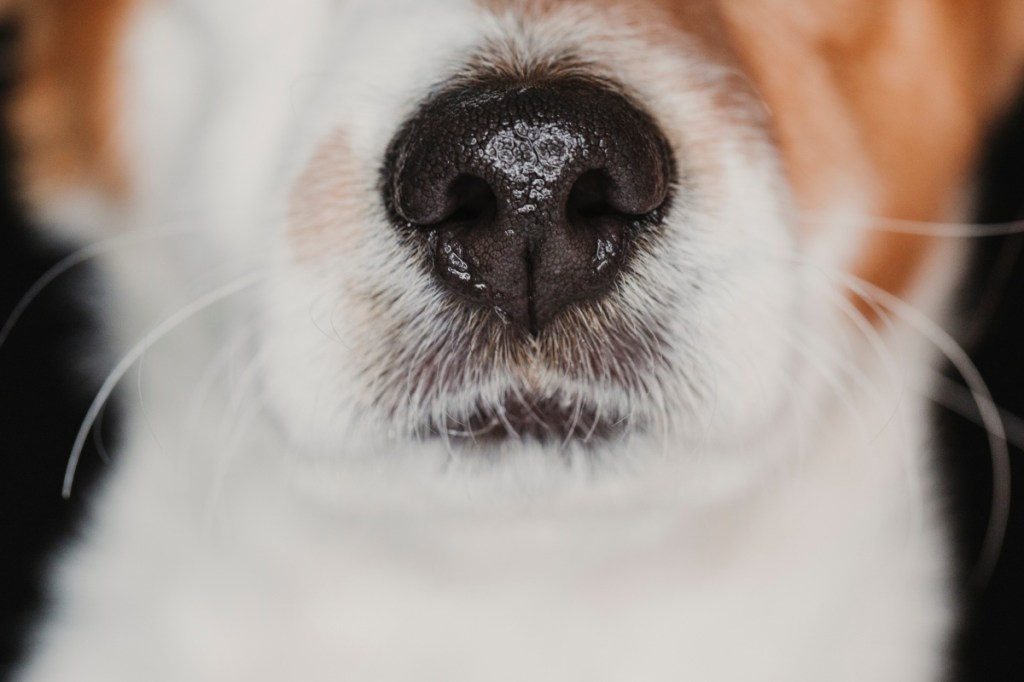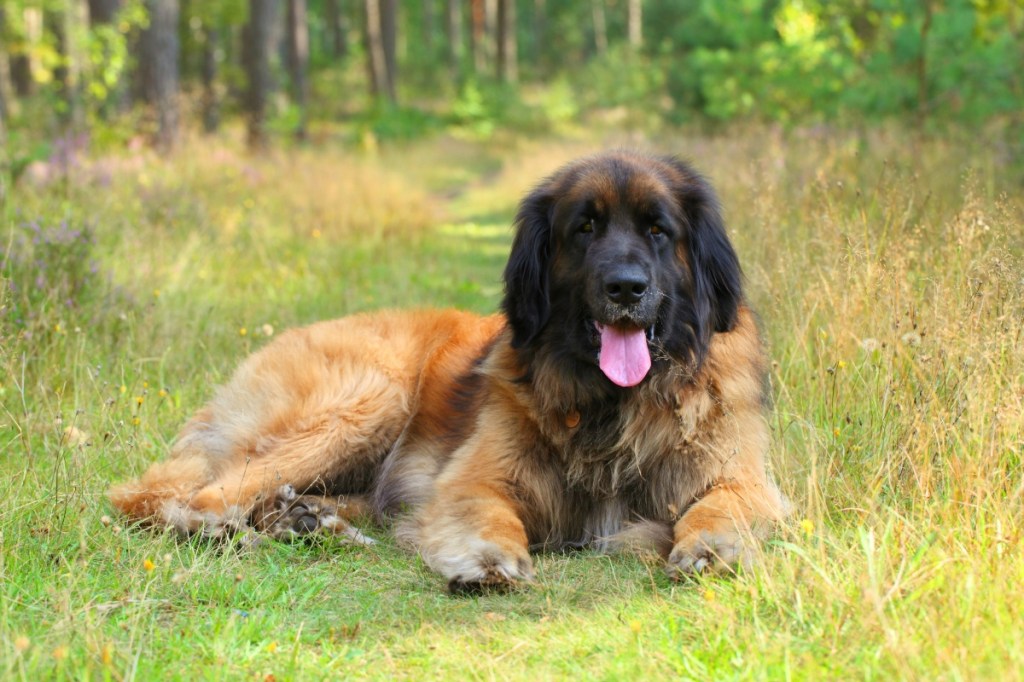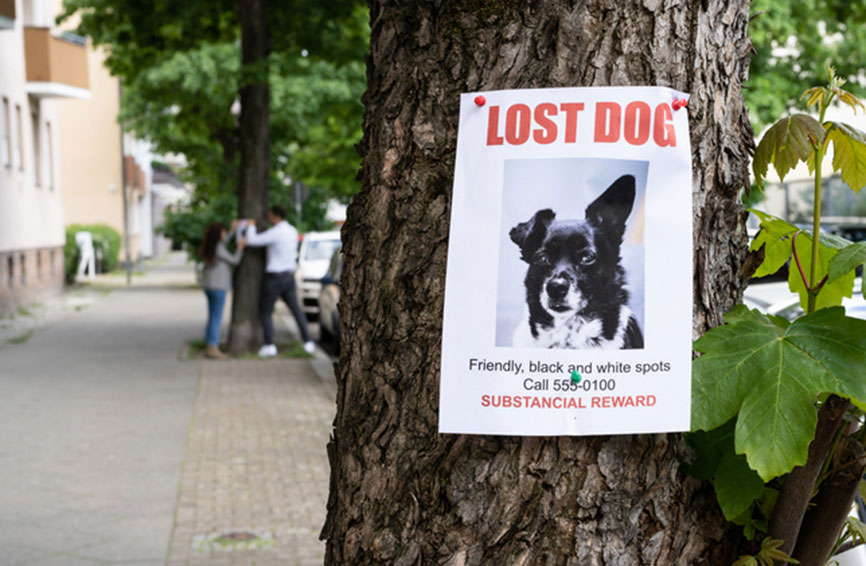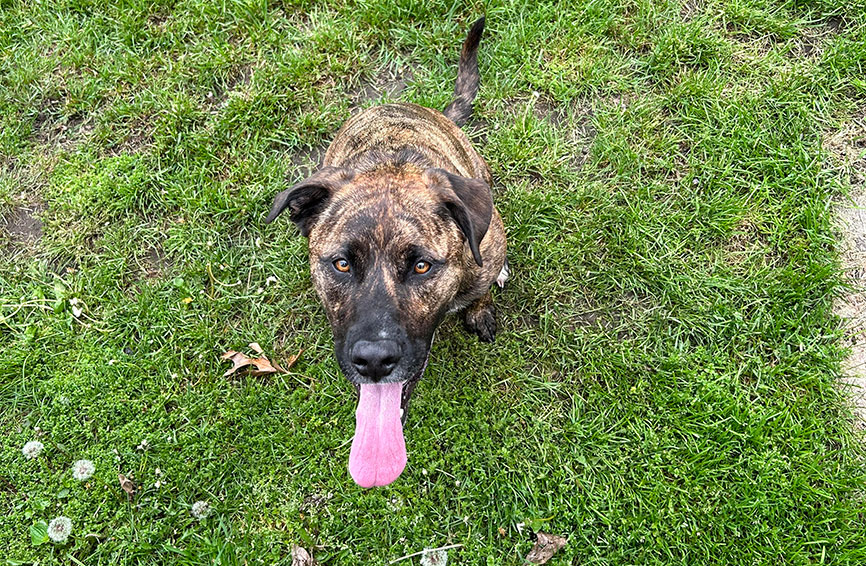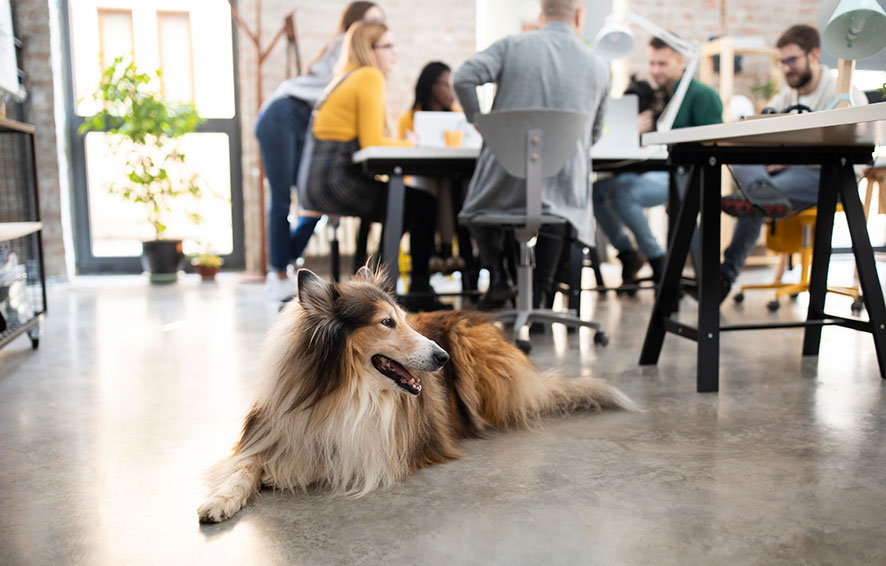Table of Contents
Introduction to Anatolian Shepherds
Known for being reserved and loyal, the Anatolian shepherd is a Working Group dog breed that originated in the Turkish countryside. These dogs were bred to be calm and protect animals with a large size and loud voice. Anatolian shepherds are rugged, territorial dogs with strong muscles and an independent nature. They require strong leaders as pet parents because of their dominant tendencies, but they are also lovable dogs that do well in households with ample room and outside space.
Continue reading this Healthy Paws breed guide to learn more about the Anatolian shepherd dog breed and how to best care for this dog’s health.
Size of Anatolian Shepherds
Female Anatolian shepherds are between 80 and 120 pounds and stand approximately 27 inches tall when fully grown. Adult male Anatolian shepherds weigh 110 to 150 pounds and are around 29 inches tall. These dogs reach physical maturity by 14 to 19 months of age, and females typically stop growing before males do.
Below is a chart detailing how big you can expect your Anatolian shepherd to get as the dog grows from puppyhood to adulthood. Female weights are on the low end of the ranges, and male weights are on the high end.
| Weight Chart | 3 months | 6 months | 9 months | 12 months | 18 months |
| Female and male Anatolian shepherds | 20 – 48 lbs. | 44 – 89 lbs. | 60 – 111 lbs. | 75 – 130 lbs. | 80 – 150 lbs. |
Characteristics of Anatolian Shepherds
An Anatolian shepherd’s most common characteristics are calmness, protectiveness, independence, and loyalty. They are not overly affectionate dogs, and they can exhibit possessive behaviors. It’s important to pay extra attention to socializing Anatolian shepherds so they learn to be accepting of strangers and other animals. They are well-balanced dogs and an ancient dog breed with moderate exercise and grooming needs.
As you get to know an Anatolian shepherd’s personality, here’s what you can expect based on the breed characteristics:
| Breed Characteristic | Level (High, Medium, Low) |
| Affectionate with People | Low |
| Good with Kids | Medium |
| Good with Pets | Medium |
| Need for Exercise | Medium |
| Energy Level | Medium |
| Intelligence Level | Medium |
| Able to Be Trained | Medium |
| Amount of Barking | Medium |
| Amount of Shedding | Medium |
History of Anatolian Shepherds
The name “Anatolian” refers to the Anatolia region of Turkey, which is part of Asia Minor. Historians believe the dogs were bred from a line of shepherds to protect livestock. Early civilizations used them to protect sheep and goats, regardless of the weather. They were able to withstand hot and dry summers, as well as sub-zero temperatures and snowy winters. Carvings dating back to 2,000 B.C. and artifacts from the Babylonian Empire depicted these flock guardians’ ancestors.
The breed first appeared in America before World War II, when the U.S. Department of Agriculture imported a pair of the dogs from Turkey to participate in a top-secret project. The researchers were studying which types of dog breeds would work best in American sheep pastures. In the 1950s, American ranchers began importing the dogs. In the 1970s, the breed started gaining more significant popularity in the U.S. One reason for this interest in the breed was the passage of the Endangered Species Act, which required ranchers to control predatory wolves without killing them – a perfect job for Anatolian shepherds to do.
The dogs still work on farms and ranches around the country to protect various livestock, including sheep, goats, and ostriches. The American Kennel Club first recognized the Anatolian shepherd dog breed in 1996.
Anatolian Shepherd Standard Information
There are certain standards by which Anatolian shepherds are judged at dog shows and competitions. The breed standard information for this type of dog outlines how the general appearance of the Anatolian shepherd is large, powerful, rugged, and has excellent agility and endurance. It also describes how these dogs are bold and calm unless challenged.
Here is an overview of the breed standard information for Anatolian shepherds:
Head:
- Intelligent expression
- Medium-sized eyes that are dark brown to light amber in color
- Ears are set no higher than the plane of the head
- Skull is large but proportional
- Muzzle is blocky and strong
- Nose is solid black or brown
- Scissors bite is preferred, but level bite is acceptable
Neck, Topline, Body:
- Neck is slightly arched and muscular
- Topline appears level when gaiting
- Body is well-proportioned and never fat or soft
- Tail is long and reaches to the hocks
Forequarters:
- Shoulders are muscular and well-developed
- Forelegs are relatively long
- Feet are compact with well-arched toes
- Pads are thick and tough
- Dewclaws may be removed
Hindquarters:
- Hindquarters are strong, with broad thighs
- Legs are parallel when seen from behind
- Dewclaws may be removed
- Double dewclaws may exist
Coat:
- Short (with a one-inch minimum) to rough coat (approximately four inches long)
- Thick undercoat is common
- Possible feathering on the ears, legs, breeching, and tail
Color:
- All colors, patterns, and markings are equally acceptable
Gait:
- Powerful yet fluid
- Footfall converges toward the center of gravity
- Withers and backline stay nearly level
Caring for Anatolian Shepherds
Although the Anatolian shepherd is a large dog, it does not require excessive exercise. However, these dogs do need plenty of room to roam around. They have straightforward grooming needs, yet training can challenge novice pet parents.
Here are some general tips for taking the best care of an Anatolian shepherd:
Best Living Environments:
- Farms and ranches
- Homes with fenced yard space to roam
- Not ideal dogs for apartments
Type of Exercise:
- At least one hour of exercise daily
- Walks and jogs
- Games of fetch
Mental Enrichment:
- Games with family members in the outdoors
- Rugged chews and food dispensing toys
Training Strategies:
- Start consistent, positive training and socialization from an early age
- Dedicate at least 10 hours per week to training and socialization
Grooming Tips:
- Overall, a low-maintenance dog to groom
- Brush weekly to remove dead fur
- Heavier shedding in the spring and fall
- Bathe as needed
- Trim nails as needed
- Brush teeth daily
- Check ears regularly for wax build-up and infections
Common Health Problems of Anatolian Shepherds
Anatolian shepherds typically live for 11 to 13 years, which is longer than the average for a dog of this size. Still, Anatolian shepherds are prone to certain health issues because of their breeding and genetics, including entropion (eyelids that roll inwards), hypothyroidism, gastric dilatation and volvulus (GDV), and a possible sensitivity to anesthesia..
The Orthopedic Foundation for Animals (OFA) recommends the following screening tests for any Anatolian shepherd that will be used for breeding:
- Hip dysplasia
- Elbow dysplasia
Diet and Nutrition for Anatolian Shepherds
Not surprisingly, Anatolian shepherds have hearty appetites because of their size. Most adults will thrive when eating a high-quality, nutritionally complete and balanced dog food. Anatolian shepherd puppies should generally eat a large breed puppy food until they are around 18 months old. If you feed your Anatolian shepherd homemade dog food, make sure you are working from a recipe that is designed by a veterinary nutritionist and is appropriate for your dog’s age and health status.
Feed the amount of dog food needed to keep your pet slim. You should be able to see your dog’s waist and feel (but not see) their ribs without having to press too hard. In general, puppies need more calories per day than adults, but a dog’s needs will vary with his or her activity level and other factors. Don’t leave food out all day for an Anatolian shepherd to graze on. Divide the total amount of food for the day into two to three meals for adults and three to four meals for puppies. Place the food out in a bowl at approximately the same time each day.
Your veterinarian can help you pick out a good dog food for your Anatolian shepherd and determine how much food to offer each day.
Where to Adopt or Purchase Anatolian Shepherds
For prospective pet parents interested in purchasing a purebred Anatolian shepherd, the Anatolian Shepherd Dog Club of America is a resource for finding a reputable breeder. There’s also the National Anatolian Shepherd Rescue Network, which is committed to finding homes for this breed’s unwanted, abandoned, and displaced dogs. On this organization’s website, you can search for available dogs in your home region, become a foster dog parent, volunteer to help dogs in need, or donate money to the group.
Related Breeds
Anatolian shepherds are a great option if you are interested in large, protective dogs to join your family or help work on your farm or ranch. There are additional dog breeds that you may be interested in as well, however, including the following:
- Great Pyrenees
- Central Asian shepherd dog
- Caucasian shepherd dog
Pet Insurance for Anatolian Shepherds
To help you provide your Anatolian shepherd with a long, healthy, and happy life, Healthy Paws offers Anatolian shepherd pet insurance for puppies to senior dogs in their golden years. Our easy-to-understand pet insurance policy has no costly add-ons or maximum limit on claim payouts. You can use our insurance coverage to pay for vet bills after new accidents and illnesses, as long as they are not pre-existing conditions or otherwise excluded under the policy.
Pet insurance is worth it for your Anatolian shepherd because it can save you thousands of dollars if your pup gets sick or injured unexpectedly. You can say yes to life-saving medical treatments without being overwhelmed by veterinary bills you can’t afford.
Please tell us a few details about your Anatolian shepherd to get your pet insurance quote today.
